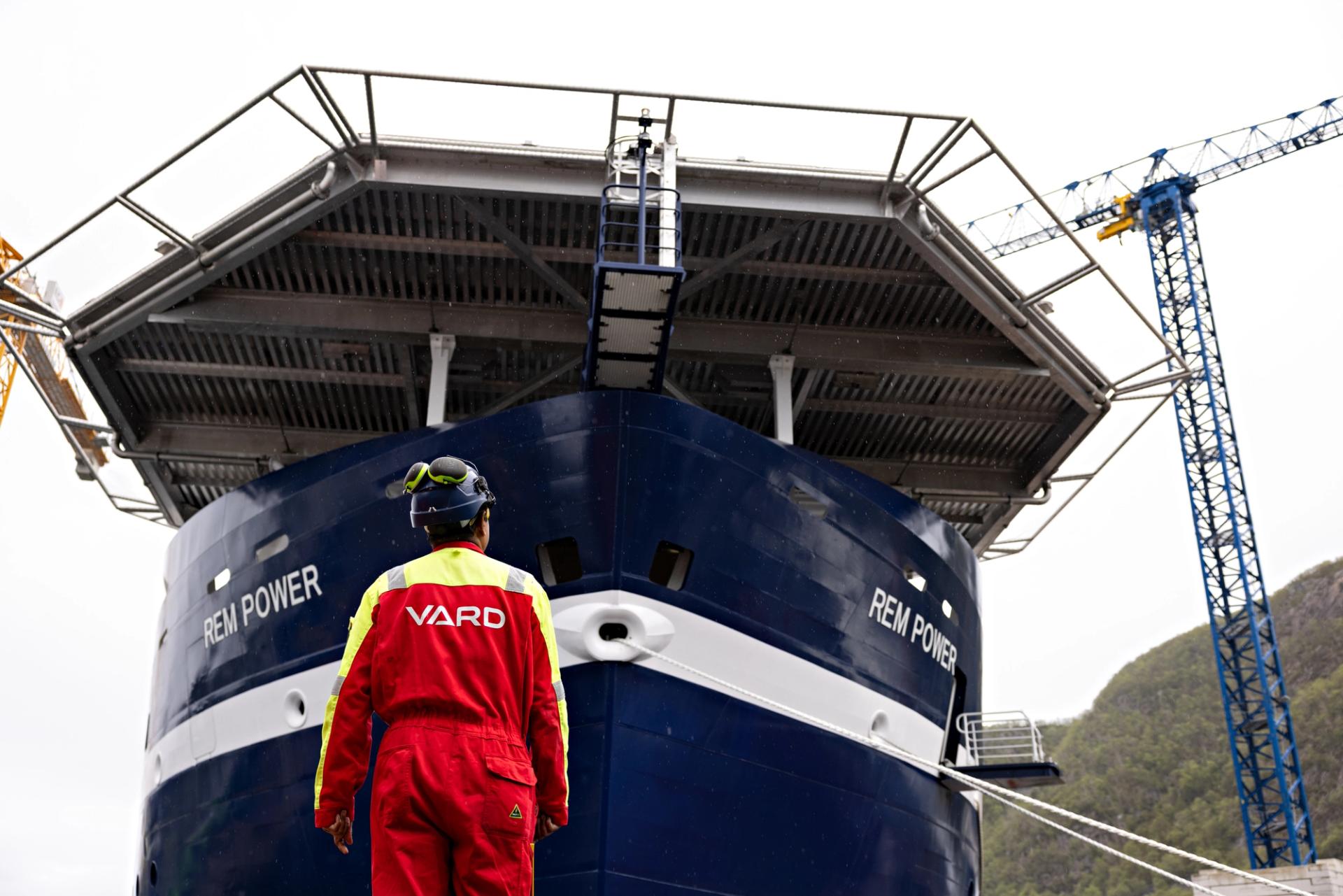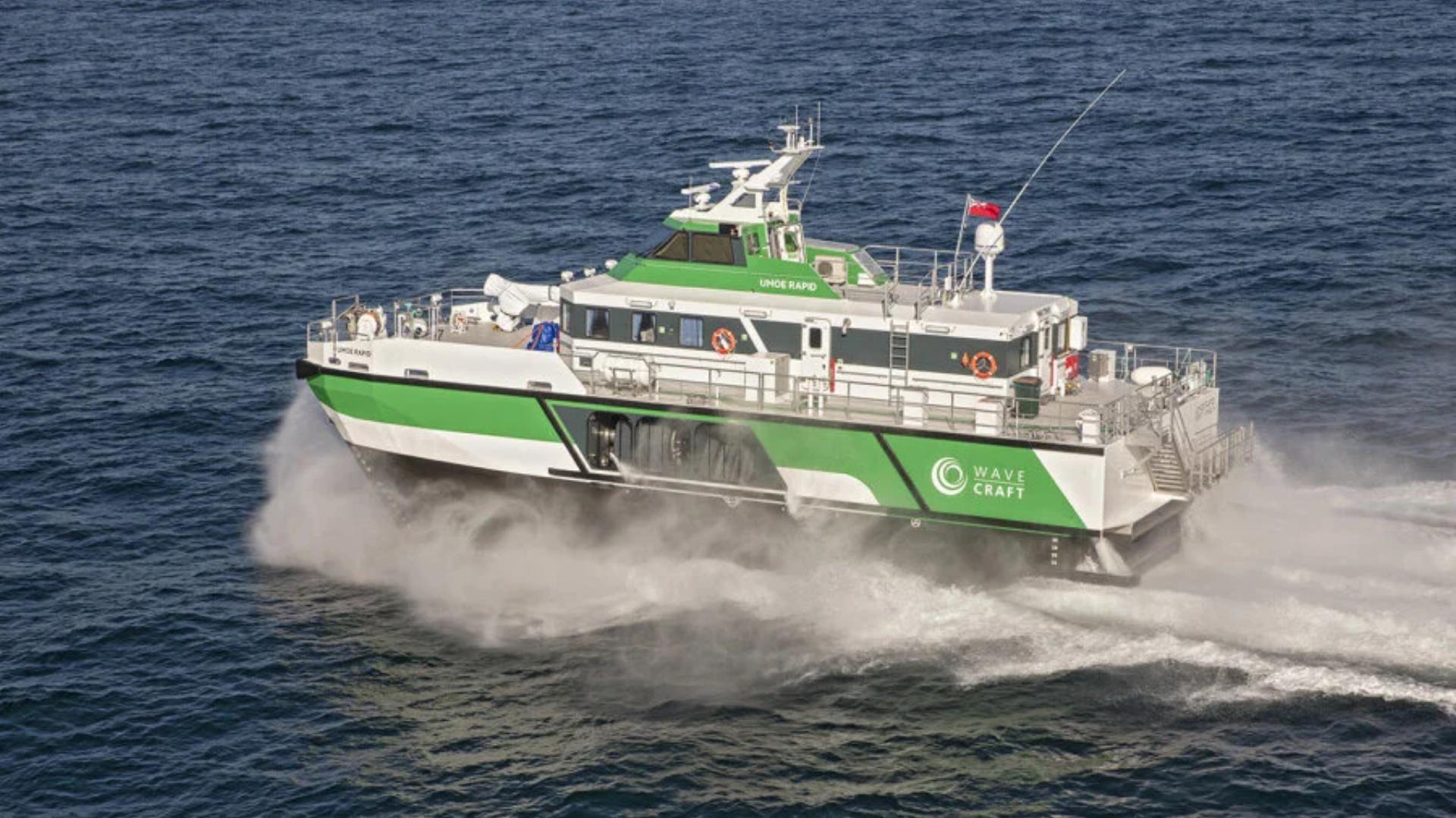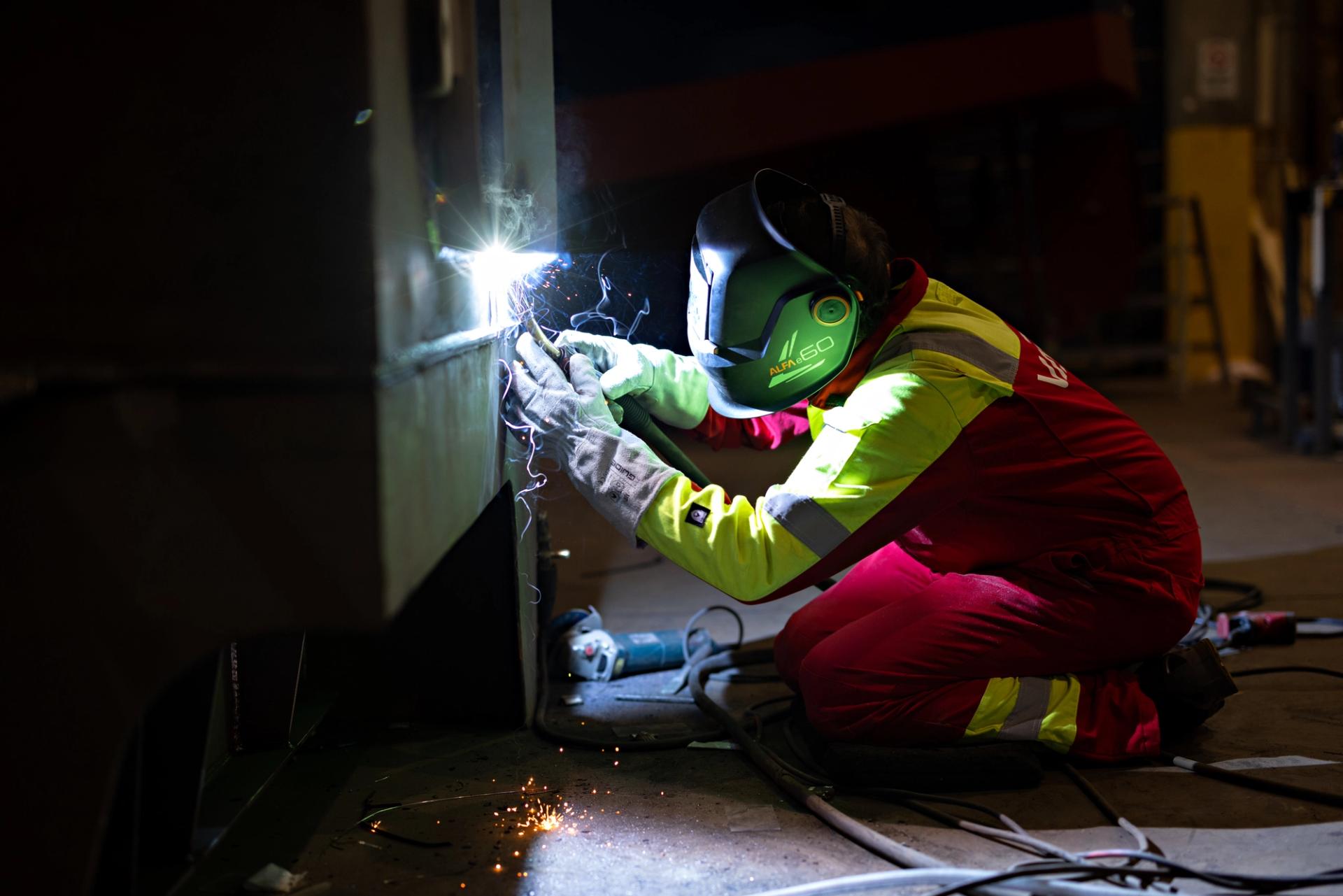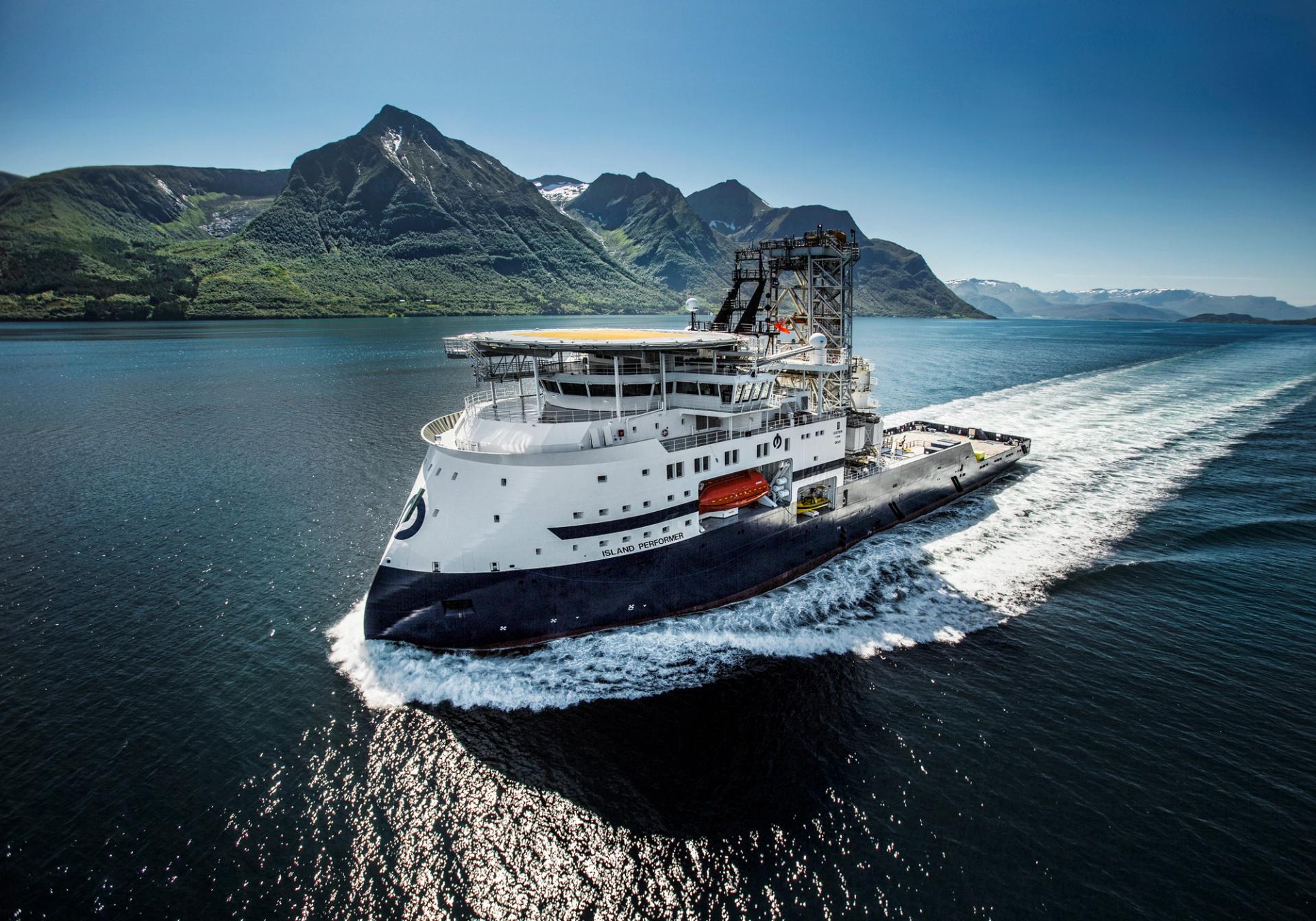

Norway future-proofs its hybrid offshore wind vessels
Published 26 Apr 2024 (updated 29 Oct 2025) · 5 min read
Offshore wind and green maritime activities go hand in hand.
As a world leader in both, Norway excels at delivering specialised vessels that meet the unique needs of offshore wind farms.
This means, in part, state-of-the-art hybrid vessels that can incorporate future propulsion technology.
“Norway’s robust value chains in offshore wind and green maritime make this possible.”
Sigurd Urdal
Special advisor for offshore wind at Innovation Norway
An offshore wind farm can’t exist without service operation vessels (SOV) or equipment for installation, maintenance and repair. Employees must be transported safely from shore to wind farm and back again. Digital, subsea and autonomous technology must be cutting edge, and everything must be done sustainably.
“Norway has many pioneering vessels, to be sure,” says Urdal, who is a special advisor for offshore wind at Innovation Norway.
“But we also try to see how the vessel is connected to fit into the broader ecosystem of offshore operations. Through digitalisation and integration with logistics systems and other elements, Norwegian companies aim to maximise efficiency and address overarching challenges more effectively. It's a holistic approach that looks beyond standalone innovations to create comprehensive solutions.”
Plug-in battery hybrids rule the day
“Norway may have the world’s best hybrid vessels for offshore wind,” says Urdal. Hybrid vessels reduce emissions and fuel consumption by up to 25 per cent compared to equivalent diesel-powered vessels. They range from service operation vessels (SOV) and crew transfer vessels (CTR) to construction support vessels (CSV), walk-to-work vessels and more.
In Norwegian newbuilds, hybrid propulsion is often standard and always optional. Electric plug-in hybrid vessels use two power sources, typically a rechargeable battery and a conventional combustion engine. Vessels can instantly switch between battery and engine when required, or they can be used simultaneously.
Batteries are used for zero-emission sailing, especially in manoeuvring and harbour operations, and for optimising the propulsion train for functions such as spinning reserve, peak shaving, black out prevention and load ramp-up support.
Future-proofing vessels lowers investment risk
The offshore shipbuilding group VARD, the largest turnkey supplier of offshore vessels in Norway and one of the major global designers and shipbuilders of specialised vessels, has attracted international attention for its high level of activity and innovation in offshore wind vessels.
In the last twelve months, for example, VARD has delivered two cutting-edge hybrid CSOVs: Norwind Hurricane to Norwind Offshore and the award-winning Rem Power to UK-based Rem Purus.
“Our customers are ordering SOVs with battery hybrid propulsion, which is a large step towards zero emission operations,” states Amrit Bhullar, SVP Business Development and Group Innovation at VARD.

Ocean Charger project
VARD is among the shipbuilders taking the hybrid one step further, future-proofing its vessels to reduce financial risk. “Our hybrid vessels can be retrofitted with alternative fuel solutions. There is an array of fuels that are being considered in the industry, which is made complex by cost, availability and other considerations. It is not a ‘one size fits all’. This is why VARD vessels are designed for future upgrades or conversion to zero-emission energy solutions,” she adds.
Moreover, she points to the Ocean Charger project, in which VARD and a consortium of industry and research partners are developing offshore charging solutions for battery-powered ships. Ocean Charger will dramatically improve energy efficiency and drastically reduce GHG emissions. Three hours of charging at a wind farm will provide one full day of service operation for an SOV with no loss of vessel operability.
World-class Norwegian suppliers in close proximity
The project’s consortium demonstrates why Norway is a leader in green maritime. Norway has a culture of collaboration, which Bhullar, a Norwegian and British dual national, sees as a competitive strength. “Norwegians’ ability to work together is something special. We prefer to collaborate to solve problems rather than take opposing sides,” she explains.
“In my personal experience, the level of trust with Norwegian partners is high.”
Amrit Bhullar
SVP Business Development and Group Innovation at VARD
Similarly, Norway’s strong maritime cluster offers the unique advantage of close proximity. The western coast of Norway hosts some of the world’s best ship designers, engineers and technology experts. Many have well-established business relationships, and potential customers can easily meet them in person to discuss projects and view tangible assets.
In addition, Norwegian maritime business culture is entrepreneurial, according to Bhullar. Perhaps due to the harsh, quickly changing weather, they know how to seize an opportunity and act quickly. This quality pairs well with the nature of global offshore wind customers, who often demand short delivery times.
Fuels of the future: methanol and green hydrogen
Norway’s green maritime cluster continually seeks solutions for the cleanest, lowest cost vessel propulsion, which one day may become an industry standard.
Notably, Eidesvik Offshore recently launched the world’s first methanol-powered vessel for offshore wind operations. Equipped with methanol engines and a battery hybrid system, its construction support vessel (CSV) vessel will be the world’s most eco-friendly vessel in its operating segments.
Similarly, the maritime powerhouse Ulstein has developed the SX232 wind subsea vessel (WSV) for wind farm installation and inter-array cable laying. The hybrid vessel has versatile fuel options, including methanol, and a battery energy storage system. Moreover, the integrated energy recovery system utilises all the waste heat from the machinery systems.
Also an innovator in green hydrogen fuel, Ulstein has developed the J102 zero-emission wind turbine installation vessel (WTIV) and the SX190 Zero Emission DP2 construction support vessel. The hybrid engines combine a clean-burning hydrogen fuel cell system and a battery energy storage system, allowing the vessel to operate in zero-emission mode 75 per cent of the operational time.
Other hybrid vessels focus on personnel transport, safety and comfort. The long-established shipbuilder, Umoe Mandal, delivers WAVECRAFT™, a series of ultra-fast, lightweight crew transfer vessels for offshore wind farms, while the promising newcomer Integrated Wind Solutions (IWS) recently delivered a fleet of plug-in hybrid vessels for walk-to-work operations at offshore wind farms.

Trustworthy business partners
Maritime companies such as these share a common cultural trait, according to Bhullar. Norway has a trust-based culture where relationships are just as important as contracts. This is a huge advantage in industries with international reach.
“In my personal experience, the level of trust with Norwegian partners is high. Together with the competency established on technology and shipbuilding, Norway offers a reliable, high-quality output to the offshore market. This quality is invaluable in a complex, fast-paced, global industry,” she concludes.

